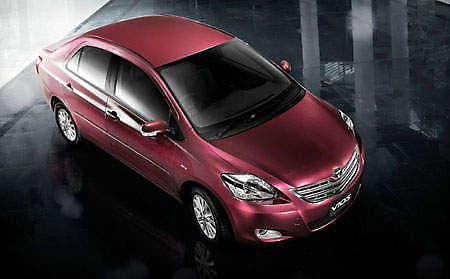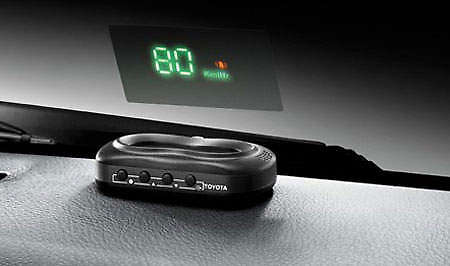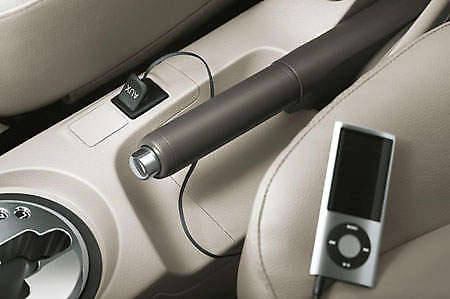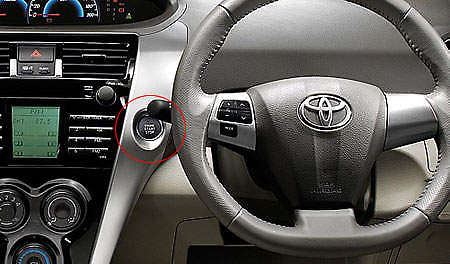
The facelifted Vios is now officially on sale in Thailand, and the Malaysian market launch should come soon after. There are not much changes externally – just the usual suspects of changed parts such as the front bumper design, grille, rear tail lamp, and a chrome strip on the boot lid. The engine remains unchanged – it is still the 1NZ-FE DOHC putting out 109 PS and 141Nm of torque.

8 models are available in Thailand, more than what we get here. Interestingly they have this version with a bodykit which I presume will make its way to Malaysia as the top of the range TRD Sportivo model (or we might get a different bodykit design), but what’s interesting is not the bodykit. It’s what looks like an aftermarket-ish Heads-Up Display module that displays the car’s current speed on your windscreen. Interesting gimmick!

Another photo reveals a new AUX input for the radio so you can connect your external MP3 players. Would be better if there was a USB port instead for the audio data to be sent to the stereo digitally. And of course finally, there’s an engine start/stop button which hints at keyless entry and go.

I personally don’t know when we’ll see the facelifted Vios launched in Malaysia but it should be very very soon. Shortly after a teaser was posted on their website in early February, the teaser page was then updated with a thick white outline of the car replacing an actual photo of the car that was there before.
Look after the jump for a full photo gallery of the Thai car. Note that specifications and other details such as bodykit design might be different from the Malaysian market.
GALLERY: Toyota Vios Facelift 2010 in Thailand
[zenphotopress number=999 album=942]
GALLERY: Toyota Vios Facelift 2010 Interior
[zenphotopress number=999 album=943]
GALLERY: Toyota Vios TRD Sportivo Facelift
[zenphotopress number=999 album=944]
Looking to sell your car? Sell it with Carro.




























AI-generated Summary ✨
The comments reflect mixed reactions to the 2010 Toyota Vios facelift; many critics describe it as ugly, overpriced, and underpowered, comparing it unfavorably with Korean rivals like Kia Forte, which some users prefer for its design and value. There are concerns about limited features, such as the absence of keyless entry and HUD in Malaysia, along with doubts over Toyota's service quality and high spare parts costs. Some owners highlight the car's reliability, low maintenance, and high resale value, contrasting with negative opinions about Toyota's overall quality, recalls, and after-sales service. Enthusiasts note improvements like interior upgrades and a flatter steering wheel, but much debate centers on its appearance, pricing, and whether it offers good value compared to alternatives. Overall, sentiments are divided, with loyalty and brand reputation influencing many opinions.